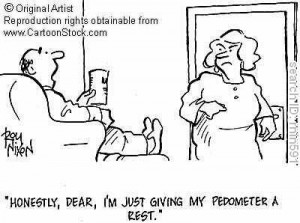Exercising is not hard, however, for many people, especially older adults, knowing how, when and where to start exercising is the challenge. Unfortunately, it is a common held belief that you need sophisticated equipment, or be a member of an expensive fitness facility to start exercising. This is simple just not the case.
Most people exercise every day by just walking but many don’t consider this “formal exercise”. Maybe that is because it is easy to do and something you can do any time, anywhere. But walking is an excellent form of cardiovascular exercise and walking has many other health benefits such as;
- Boosts your energy
- Reduce stress and improve mood
- Help reduce the risk of chronic disease, heart disease and stroke
- Help in weight control and help prevent and control type 2 diabetes.
- Strengthen bones and help prevent or control osteoporosis.
- Improve joint mobility.
Because we are so accustomed to walking we take it for granted but, just like other forms of exercise, there are guidelines to follow if walking is to have a significant health effect. The table below gives a simple guideline follow to ensure you are walking enough and getting a health benefit;
|
Number of Steps / day |
Health Effect |
|
< 5,000 |
“Below Average”. Not enough physical activity |
|
5,000 to 7500 |
“Average” for most people but not enough to provide all the health benefits of walking |
|
7,500 to 10,000 |
“Somewhat active” |
|
10,000 to 12,500 |
“Active”. A good target to aim for |
|
> 12,500 |
“Highly active”. At this level you are receiving significant health benefits |
At first glance, you may think that 10,000 or more steps per day is a lot, but when you consider that it only takes about 5 minutes at average walking speed to get in 500 steps then it does not seem a too daunting of a task. If you add up the number of minutes that you walk throughout the day I am sure that it is well over an hour and a half. But rather than count the number of minutes you walk a more precise, effective and inexpensive way to monitor the number of steps you take in a day is to use a Pedometer.
A pedometer is a battery-powered, pager-size devise worn on your belt. It records and displays the number of steps you take based on your body’s hip movement. Some pedometers simply count steps while other will also track the distance you walked and the calories you burn. The average cost of a pedometer ranges between 17 to 30 dollars depending on the sophistication of the device.
One of the great advantages of wearing a pedometer is that it gives you instant and accurate feedback with respect to your activity level. For example, if you have had a day that required you to do a lot of sitting at your computer and you noticed at lunch or before dinner that the number of steps you have taken is below your average you can make it a point to take an extra 5, 10 or 15 minutes during the day or evening to get in your recommended number of walking steps. The pedometer helps you become more aware of your activity level and helps you become more accountable in making sure you keep as active as you need to be.
Counting the number of steps you take in a day is a great way to start on your road to improved fitness and health. Over time, as you get accustomed to counting the number of steps you take during the day, you can start to consider the intensity or speed that you walk to enhance the health benefits of walking. You may even find yourself thinking of ways, throughout your busy day, to increase the number of “steps” you take. Strategies such as walking up stairs rather than using the escalator or parking the car a little farther from work are great ways of forcing you to use your legs and walk a little more.
Good fitness starts in modest ways. The first step is often the hardest step to make and utilizing a pedometer is a great way of counting those first steps towards better health.
Try it, you will feel better for it.
If you’d like more info please contact Mike.

